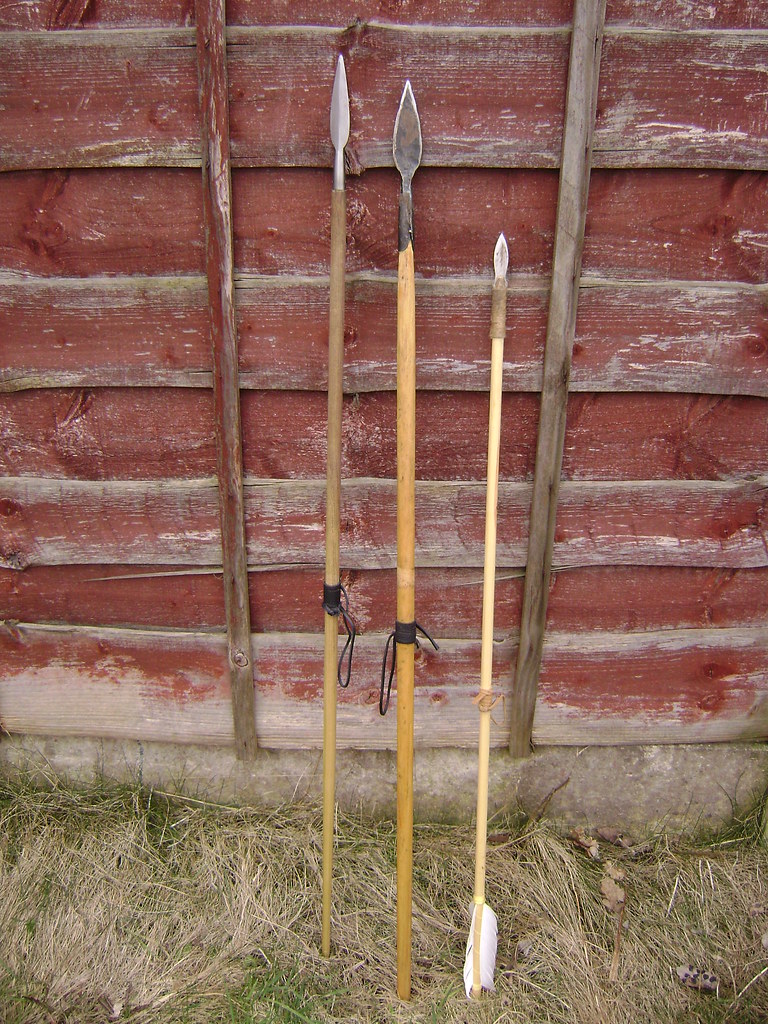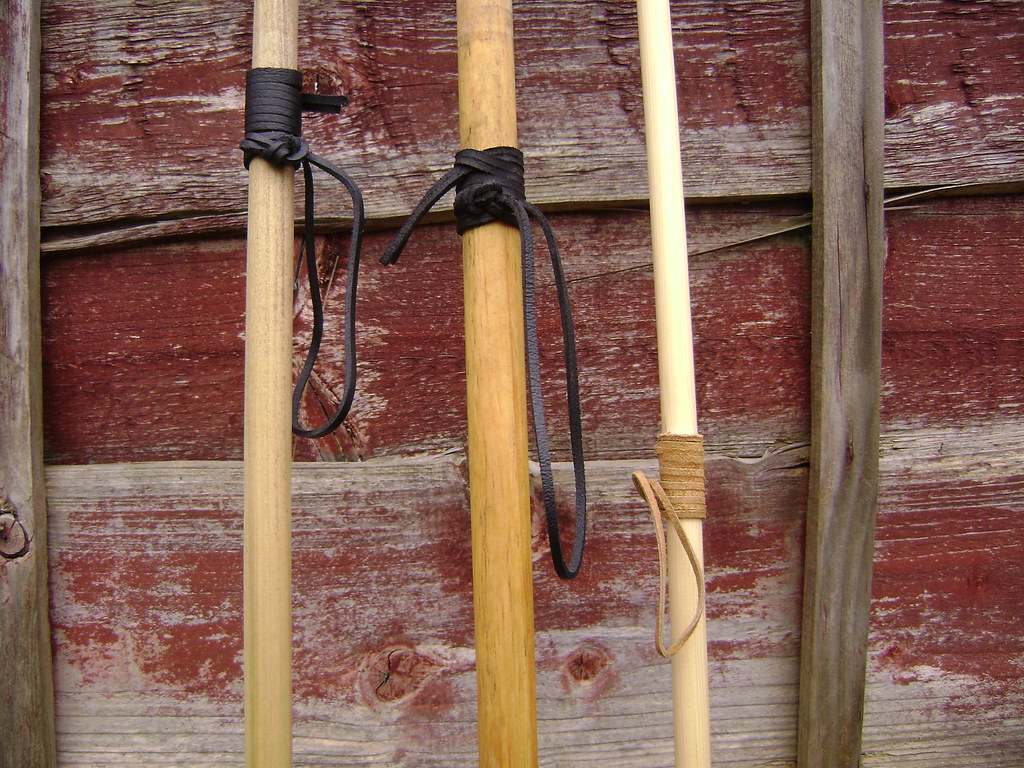| Author |
Message |
|
David Colter
|
|
  |
 |
|
M. Livermore
|
 Posted: Fri 02 Apr, 2010 8:43 am Post subject: Posted: Fri 02 Apr, 2010 8:43 am Post subject: |
 |
|
|
I am glad to see the tangential deflection of the dart captured so well by the atlatl video. I have been trying to explain the concept to some friends, and this will be of great help. What is that dart made from?
|
|
  |
 |
|
David Colter
|
 Posted: Fri 02 Apr, 2010 12:34 pm Post subject: Posted: Fri 02 Apr, 2010 12:34 pm Post subject: |
 |
|
It is six feet of 12mm pine dowel. There is a 1/2" iron bodkin point and feather fletching. Flexibility is what determines the length of your dart. It should bend out sideways if you push lengthways on one end with about 7lbs of force. If it is too stiff it wont launch right, the tail will be pushed down by the final movement of the atlatl and the dart will porpoise badly, costing you accuracy and power.
Some people will try and tell you about 'stored spring energy' and other such stuff, basic arithmetic shows that there is no such thing going on.
Whats is really going on is that the natural frequency of oscillation of the dart needs to be such that the dart's ends are bending downwards as the tip of the atlatl goes 'over the top' and heads downwards. That way they match up and no downward force is imparted to the dart before they separate. If the dart is too stiff and oscillating too quickly then the flexing will have reversed already and the tail will be trying to move upwards as the atlatl spur moves downwards. They fight against each other and the dart loses, getting its tail pushed downwards.
|
|
  |
 |
Steven H

|
 Posted: Fri 02 Apr, 2010 12:44 pm Post subject: Posted: Fri 02 Apr, 2010 12:44 pm Post subject: |
 |
|
Thanks for sharing.
Those Javelins look small too me. Are those a Medieval design or something else?
Cheers,
Steven
Kunstbruder - Boston area Historical Combat Study
|
|
   |
 |
|
David Colter
|
 Posted: Fri 02 Apr, 2010 1:29 pm Post subject: Posted: Fri 02 Apr, 2010 1:29 pm Post subject: |
 |
|
Javelins vary widely across history. This length of about 52" seems right for Greek/Roman skirmishers but the shaft diameter of 1" is probably too much. The spearhead is one I bought from a festival blacksmith in Germany, the shaft is a broom handle with the tail end tapered to move the balance point to one-third of the way back from the tip.
The javelin I used is the middle one of these three:

A closeup of the fixed amentum:

The detaching amentum I used was braided from jute cord, modeled on this:
http://www.nma.gov.au/cook/artefact.php?id=337
And used like this:
http://www.antiqueprints.com/proddetail.php?prod=f7238
Last edited by David Colter on Fri 02 Apr, 2010 2:05 pm; edited 1 time in total
|
|
  |
 |
Steven H

|
 Posted: Fri 02 Apr, 2010 1:36 pm Post subject: Posted: Fri 02 Apr, 2010 1:36 pm Post subject: |
 |
|
Thanks for the additional info David.
Do you have info on what Medieval javelins were like as well. I'm gonna be building some soon.
Cheers,
Steven
Kunstbruder - Boston area Historical Combat Study
|
|
   |
 |
|
David Colter
|
 Posted: Fri 02 Apr, 2010 2:04 pm Post subject: Posted: Fri 02 Apr, 2010 2:04 pm Post subject: |
 |
|
|
I have no info on medieval javelins. I would be surprised if there was much standardization there, the javelin is a cheap and simple weapon for skirmishing. You carry several, chuck them at the enemy and dont expect to get them back again.
|
|
  |
 |
|
|

